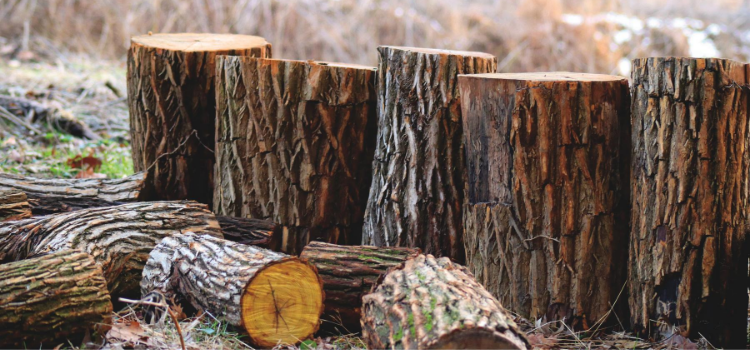Keeping it Safe at the Logging Job SitePosted: 2020-08-18
Logging has been one of the most dangerous occupations in the United States. According to the U.S. Bureau of Labor Statistics, logging workers had fatality rates more than ten times the all-worker rate of 3.5 fatalities per 100,000 FTE workers. A decade ago, the logging industry employed 95,000 workers and accounted for 70 deaths in 2010 alone. These fatal accidents are why there is a need for prioritizing safety in the logging job site. What Makes Logging a Dangerous Occupation? There are several health and safety risks associated with logging operations, including distracted driving (mobile equipment), machinery danger zone infractions, working directly on public access roads, lifting logs or trees, inexperience, and fatigue-induced incidents. The risks become even more severe when loggers are working in dangerous conditions such as rough terrain, bad weather, and remote logging sites that are too far from health care facilities. Every logging company should create a safety training program as part of the on-boarding process. When company safety rules and regulations are established, the risk of an accident can be significantly minimized. Here are some ways you can increase your safety while working in a dangerous work such as a logging job site. Always wear proper protective equipment. Logging activities involves the operation of chainsaws, which causes dust and debris to fly through the air. To protect yourself from these particles, be sure to wear a mask that is strong enough and can filter speck of wood. Gloves are also a piece of essential protective equipment, especially if you’re handling electrical devices. Therefore, put on gloves that are adequately insulated to avoid electrical shock. Due to the hazards at a logging job site, it is necessary to wear bright-colored vests to make you stand out so that loggers can easily spot you. Also, it would be best if you protect your feet at all times. Therefore, make sure you’re wearing steel-toed boots. Be mindful of your surroundings. Perhaps the best way to keep yourself safe in a logging job site is to be aware of what’s around you. When working with tall, heavy objects (like trees), be watchful of the direction where they are falling. That’s because hundreds of loggers suffer from overhead hazards each year. There should be at least two tree lengths between you and the tree that is being felled. This is an effective way to minimize the risk and injuries on the job. If you’re working near machinery, follow company safety procedures before entering the danger zone of the machine. Some of the things you can do to ensure safety are to communicate via radio or at least maintain eye contact and establish a well-understood hand signal system that tells you to “stop”. You and your co-workers should watch out for one another. Keep your equipment in tip-top shape. Regular maintenance of your heavy equipment ensures they are running smoothly and predictably to avoid delays. More importantly, a piece of equipment that undergoes regular tune-up is much less likely to fail compared to one that isn’t regularly looked after. With regular maintenance, you can retain the operation of safety mechanisms on the equipment, protecting you from harm on the job. A machine that’s acting up while running could put the operator and other workers at risk of injury. Also, you can take simple steps to ensure operational safety. Here are some examples:
Allow only qualified people to operate machinery. If anyone thinks that operating heavy machinery is a walk in the park, they should think again. Running machines like chainsaws and skidders require training and experience to ensure safety. Formal training allows people to operate logging equipment safely and efficiently. When someone takes formal lessons, they will learn the finer points of logging equipment operation. They will be handling equipment with finesse and care. Besides, formal training ensures that the operator is working on the equipment with minimal risk to fellow workers. It also gives him an understanding of the required state and federal government safety regulations.
| |






.jpg)
